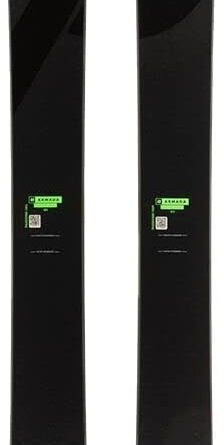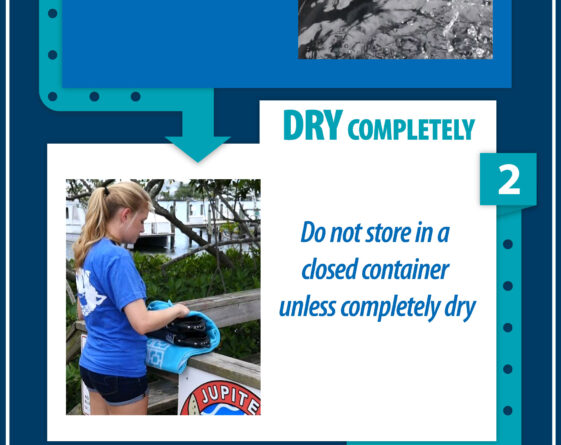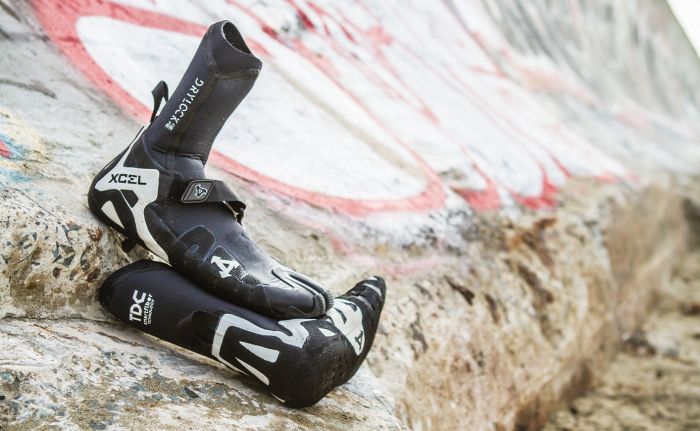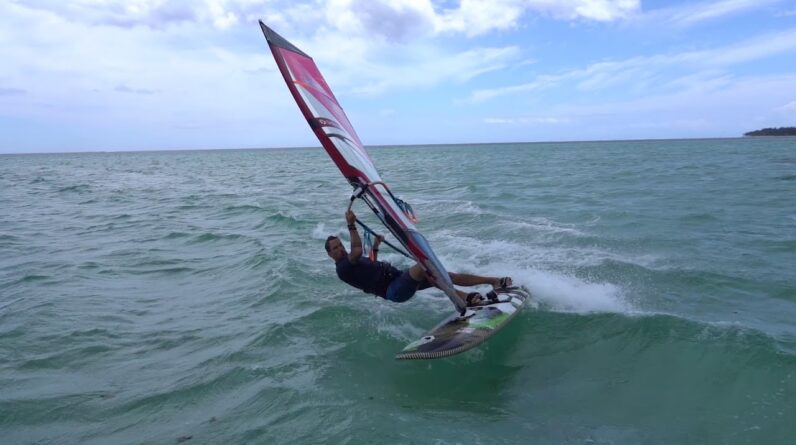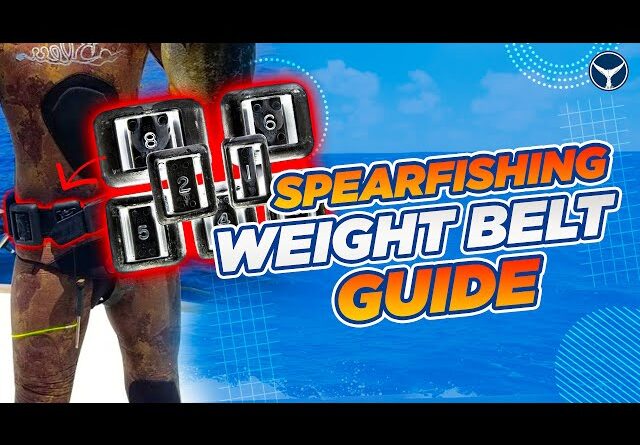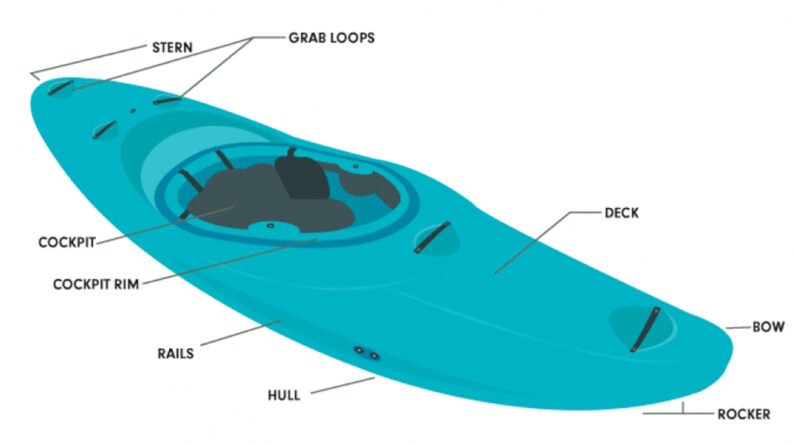
If you’ve ever wondered about the differences between kayak hull designs, look no further. In this article, we will explore the different types of kayak hulls and explain their unique characteristics. Whether you’re a seasoned kayaker or just getting started, understanding the various hull designs will help you make an informed decision when choosing your next kayak adventure. So, let’s dive right in!

This image is property of paddleabout.com.
Hull Design Basics
Definition of a hull
A hull refers to the bottom part or shell of a water vessel, such as a kayak. It is the foundational structure that determines the boat’s stability, performance, and maneuverability on the water. The hull design plays a crucial role in how a kayak moves through various water conditions, making it an essential aspect to consider when choosing a kayak.
Importance of hull design
The hull design of a kayak plays a vital role in determining its overall performance and suitability for specific water conditions. It affects how the kayak tracks (maintains its course), maneuvers, and handles different types of waves and currents. A well-designed hull can make your kayaking experience more enjoyable and enhance your safety on the water.
Factors influencing hull design
Several factors influence the design of a kayak’s hull. These include the intended use of the kayak, the water conditions it will encounter, and the desired performance characteristics. Factors like stability, speed, agility, and the ability to handle rough waters or calm lakes are taken into consideration when designing a kayak hull. Manufacturers analyze these factors to create specific hull designs that cater to different needs and preferences.
Flat Hull
Description of a flat hull
A flat hull, also known as a planar hull, has a flat bottom surface. It lacks pronounced curves or contours, providing a large surface area in contact with the water. This design creates a stable platform that provides primary stability and makes it easier for beginners to maintain balance. Flat hulls are commonly found in recreational kayaks, fishing kayaks, and beginner-friendly models.
Advantages of a flat hull
The flat hull design offers excellent initial stability, making it easier for users to feel comfortable and balanced when paddling. This stability is particularly beneficial for beginners or those who prefer a more relaxed kayaking experience. Flat hulls also tend to have a larger surface area, which enhances overall buoyancy, allowing for better weight distribution and cargo capacity.
Disadvantages of a flat hull
While a flat hull provides great initial stability, it sacrifices some aspects of maneuverability and speed. The lack of curvature reduces the hull’s ability to slice through the water efficiently, thus resulting in decreased speed and maneuverability. Additionally, the flat-bottomed surface can be prone to catching wind, making it more challenging to paddle against strong gusts or currents.
Suitable conditions for a flat hull
Flat hull kayaks are well-suited for calm lakes, slow-moving rivers, and sheltered coastal areas with minimal waves or choppy water. Their stability and ease of use make them ideal for recreational paddling, fishing, and relaxed outings where speed and maneuverability are not the primary concerns.
Rounded Hull
Description of a rounded hull
A rounded hull, also known as a round-bottom hull, features a smooth, curved surface along the bottom of the kayak. This hull design facilitates better maneuverability, speed, and tracking compared to flat hulls. The pronounced curvature allows the kayak to cut through the water efficiently, making it suitable for various paddling conditions.
Advantages of a rounded hull
Rounded hulls offer enhanced maneuverability, allowing kayakers to make precise turns and navigate tight spaces with ease. The curved shape also reduces the friction between the kayak and the water, increasing its speed potential. Rounded hulls tend to track more efficiently than flat hulls, providing better directional stability and reducing the effort required to maintain a straight course.
Disadvantages of a rounded hull
While rounded hulls excel in maneuverability and speed, they sacrifice some aspects of primary stability. The rounded shape creates less initial stability, making the kayak feel tippy or unstable for beginners or paddlers who prefer a stable platform. Additionally, the reduced surface area in contact with the water may limit the cargo capacity of rounded hull kayaks.
Suitable conditions for a rounded hull
Rounded hull kayaks are well-suited for intermediate to advanced paddlers who prioritize maneuverability and speed. They perform admirably in rougher water conditions, such as ocean waves or fast-moving rivers, where quick turns and responsive handling are necessary. However, beginners should approach rounded hull kayaks with caution due to their reduced stability.
V-Shaped Hull
Description of a V-shaped hull
A V-shaped hull features a pronounced V-shape along the bottom surface of the kayak. This design is characterized by two angled surfaces that come together to form the keel or centerline of the kayak. V-shaped hulls are commonly found in sea kayaks and touring kayaks, as they excel in tracking and handling rough water conditions.
Advantages of a V-shaped hull
V-shaped hulls offer exceptional tracking capabilities, allowing the kayak to maintain a straight course even in the presence of wind or currents. The sharp angle of the hull slices through the water, reducing friction and increasing speed potential. The V-shaped design also provides secondary stability, allowing paddlers to lean the kayak for improved maneuverability without sacrificing stability.
Disadvantages of a V-shaped hull
While V-shaped hulls excel in tracking and secondary stability, they sacrifice some initial stability compared to flat or rounded hulls. This can make beginners or inexperienced paddlers feel less secure, especially in calm or still water conditions. The sharp V-shape can also make the kayak more susceptible to sideways movement in rough water, requiring skilled paddling techniques to maintain stability.
Suitable conditions for a V-shaped hull
V-shaped hull kayaks are well-suited for sea kayaking, touring, and long-distance paddling. Their excellent tracking ability, speed potential, and ability to handle rough waters make them ideal for open ocean adventures or extended river trips. However, beginners may want to gain experience and confidence before opting for a V-shaped hull due to its reduced initial stability.

This image is property of cdn.shortpixel.ai.
Pontoon Hull
Description of a pontoon hull
A pontoon hull, also known as a twin-hull or catamaran hull, consists of two parallel hulls connected by a deck or central structure. This design creates a stable and buoyant platform, providing excellent stability and load-carrying capacity. Pontoon hulls are commonly found in fishing kayaks, recreational kayaks, and specialized touring models.
Advantages of a pontoon hull
Pontoon hulls offer unparalleled stability, making them ideal for fishing, photography, or activities that require a stable platform. The twin-hull setup ensures excellent primary stability, allowing users to stand or move around without fear of tipping over. The wide beam and buoyant nature of pontoon hulls also enhance their load-carrying capacity, making them suitable for carrying equipment, camping gear, or even a furry friend.
Disadvantages of a pontoon hull
While pontoon hulls excel in stability, they sacrifice some speed and maneuverability compared to narrower hull designs. The wider platform and increased surface area in contact with the water create more drag, resulting in reduced speed potential. Additionally, the wider beam can limit the kayak’s ability to navigate narrow or tight spaces, such as narrow river sections or rocky areas.
Suitable conditions for a pontoon hull
Pontoon hull kayaks are well-suited for calm lakes, slow-flowing rivers, and protected coastal waters, where stability and load-carrying capacity are prioritized over speed and maneuverability. They are particularly popular among anglers who benefit from the stable platform for casting and reeling in fishing lines. Pontoon hulls can also be a great choice for recreational paddling or leisurely outings where stability is key.
Chine Hull
Description of a chine hull
A chine hull features a distinct edge or angle along the bottom of the kayak. The edge, known as the chine, creates a transitional point between the hull’s bottom and its sides. Chine hulls come in various forms, including hard chine and soft chine designs. This hull design offers a balance between stability, speed, and maneuverability.
Advantages of a chine hull
Chine hulls provide a combination of initial stability and maneuverability. There are two main types of chine hulls: hard chine and soft chine. Hard chine hulls have a more pronounced angle, providing excellent initial stability and responsiveness, while soft chine hulls offer a smoother transition for increased secondary stability. Chine hulls can handle a range of water conditions and are suitable for different types of kayakers.
Disadvantages of a chine hull
While chine hulls offer a balance of stability and maneuverability, they may not excel in either category when compared to specialized hull designs. Hard chine hulls can feel a bit tippy for beginners or inexperienced paddlers, requiring them to adapt to the hull’s characteristics. Soft chine hulls sacrifice some initial stability for improved secondary stability, which may not be ideal for those seeking maximum stability.
Suitable conditions for a chine hull
Chine hull kayaks are well-suited for those who desire a versatile kayak that performs well in various water conditions. They are suitable for recreational paddling, touring, and even navigating moderate coastal waters. Chine hulls strike a balance between speed and stability, catering to both beginner and intermediate paddlers looking to explore different environments.

This image is property of paddleabout.com.
Planing Hull
Description of a planing hull
A planing hull is characterized by a flat or slightly curved bottom that tends to ride on the water’s surface rather than slicing through it. This hull design generates lift, allowing the kayak to rise onto the water at higher speeds. Planing hulls are commonly found in surf kayaks, whitewater kayaks, and some recreational kayaks.
Advantages of a planing hull
Planing hulls excel in stability, particularly at slower speeds or when performing maneuvers in rough water. The flat bottom or slight curve provides excellent initial stability, making planing hull kayaks feel stable even in challenging conditions. Planing hulls are also popular for those engaging in surf kayaking or riding waves, as the lift generated by the hull enhances the kayak’s ability to catch and ride waves.
Disadvantages of a planing hull
While planing hulls offer exceptional stability, they sacrifice some speed and efficiency compared to other hull designs. The flat or curved bottom creates increased drag when paddling at higher speeds, limiting the kayak’s overall velocity potential. Planing hulls also lack the ability to slice through the water efficiently, resulting in reduced tracking and maneuverability compared to more streamlined hulls.
Suitable conditions for a planing hull
Planing hull kayaks are well-suited for activities that involve rough water, such as whitewater paddling or surf kayaking. Their superior stability and ability to ride waves make them ideal for those seeking thrilling water adventures. Additionally, planing hull kayaks can be suitable for recreational paddling in calm lakes or slow rivers, where stability and ease of use are prioritized over speed.
Rocker Hull
Description of a rocker hull
A rocker hull, also referred to as a banana hull, has a pronounced curve along its length. When viewed from the side, the kayak resembles a banana, with the ends curved upward. This design allows the kayak to pivot or turn more easily, making it highly maneuverable in tight spaces. Rocker hulls are commonly found in whitewater kayaks, playboats, and kayaks designed for river running.
Advantages of a rocker hull
Rocker hulls offer exceptional maneuverability, allowing the kayak to turn quickly and effortlessly. The pronounced curve along the length of the kayak enhances its ability to pivot, making it highly responsive to paddling inputs. Rocker hulls excel in navigating tight spaces, such as narrow sections of rivers or technical whitewater features. Additionally, the upward-curving ends help prevent the kayak from submerging in waves or whitewater.
Disadvantages of a rocker hull
While rocker hulls excel in maneuverability, they sacrifice some aspects of speed and tracking. The curved shape creates increased friction with the water, resulting in reduced overall speed performance. Rocker hulls may also feel less stable due to their reduced surface contact with the water. Beginners or those seeking high-speed, straight-line paddling may find rocker hull kayaks less suitable for their needs.
Suitable conditions for a rocker hull
Rocker hull kayaks are well-suited for whitewater paddling, freestyle kayaking, or river running. Their exceptional maneuverability and ability to pivot quickly make them ideal for navigating rapids, eddies, and technical features. While they may not offer the same speed potential as other hull designs, rocker hull kayaks provide an exhilarating paddling experience in dynamic water environments.
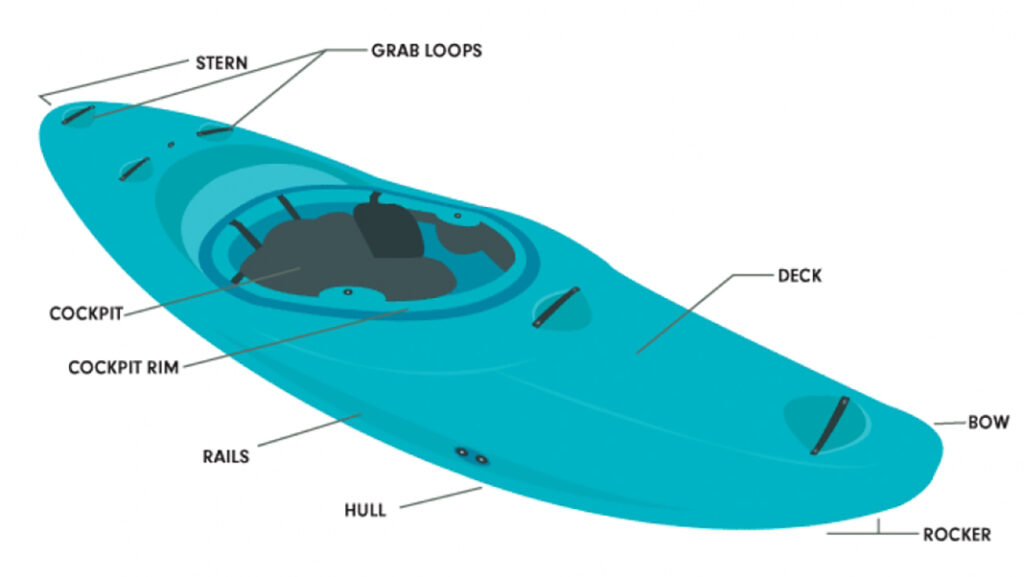
This image is property of paddlingmagazine-images.s3.amazonaws.com.
Tunnel Hull
Description of a tunnel hull
A tunnel hull design incorporates a concave or tunnel-like feature along the bottom of the kayak, typically in the center portion. This design creates a secondary pontoon-like effect, offering increased stability and improved tracking. Tunnel hulls are commonly found in recreational kayaks, fishing kayaks, and hybrid models.
Advantages of a tunnel hull
Tunnel hulls provide excellent stability due to their pontoon-like design. The concave center section enhances the kayak’s primary stability, making it easier for beginners or those seeking a stable platform. Tunnel hulls also offer improved tracking capabilities, allowing the kayak to maintain a straight course even in the presence of wind or currents.
Disadvantages of a tunnel hull
While tunnel hulls offer great stability and tracking, they may sacrifice some maneuverability compared to narrower hull designs. The wider platform and increased surface area can create more drag, resulting in decreased speed potential. Additionally, the tunnel-like feature may limit the kayak’s ability to navigate narrow or tight spaces, such as narrow river sections or rocky areas.
Suitable conditions for a tunnel hull
Tunnel hull kayaks are well-suited for recreational paddling, fishing, and leisurely outings on calm lakes, slow rivers, or protected coastal waters. Their stability and ease of use make them ideal for beginners or those seeking a relaxing kayaking experience. Tunnel hulls excel in offering a stable platform for various activities, such as fishing or wildlife photography.
Multi-Chine Hull
Description of a multi-chine hull
A multi-chine hull features multiple angles, or chines, along the bottom surface of the kayak. This design combines different concepts from various hull styles to create a versatile kayak with enhanced stability and maneuverability. Multi-chine hulls can be found in a range of kayaks, from recreational and touring models to specialized whitewater kayaks.
Advantages of a multi-chine hull
Multi-chine hulls offer excellent stability and maneuverability, combining the best attributes of different hull designs. The various angles create multiple transition points, providing both initial and secondary stability. The unique design of multi-chine hulls enhances kayak responsiveness and maneuverability, allowing paddlers to handle different water conditions with confidence.
Disadvantages of a multi-chine hull
While multi-chine hulls offer a balance of stability and maneuverability, they may not excel in either category when compared to specialized hull designs. Depending on the specific angles and curves of the multi-chine hull, there may be variations in their performance characteristics. It’s essential to consider the intended use and specific needs when choosing a multi-chine hull kayak.
Suitable conditions for a multi-chine hull
Multi-chine hull kayaks are well-suited for those seeking a versatile kayak with a balance of stability and maneuverability. They can be suitable for recreational paddling, touring, sea kayaking, or even whitewater adventures, depending on the specific design and construction. Multi-chine hulls are ideal for those wanting a kayak that can handle different water conditions and adapt to various paddling styles.
In conclusion, understanding the various kayak hull designs is vital for selecting the right kayak that suits your needs, skill level, and the type of water conditions you plan to encounter. Whether you prioritize stability, speed, maneuverability, or a combination of these factors, the diverse hull designs available offer something for everyone. Consider your paddling goals, experience level, and the specific features of different hull types to make an informed decision and embark on enjoyable and safe kayaking adventures.

This image is property of paddleabout.com.


